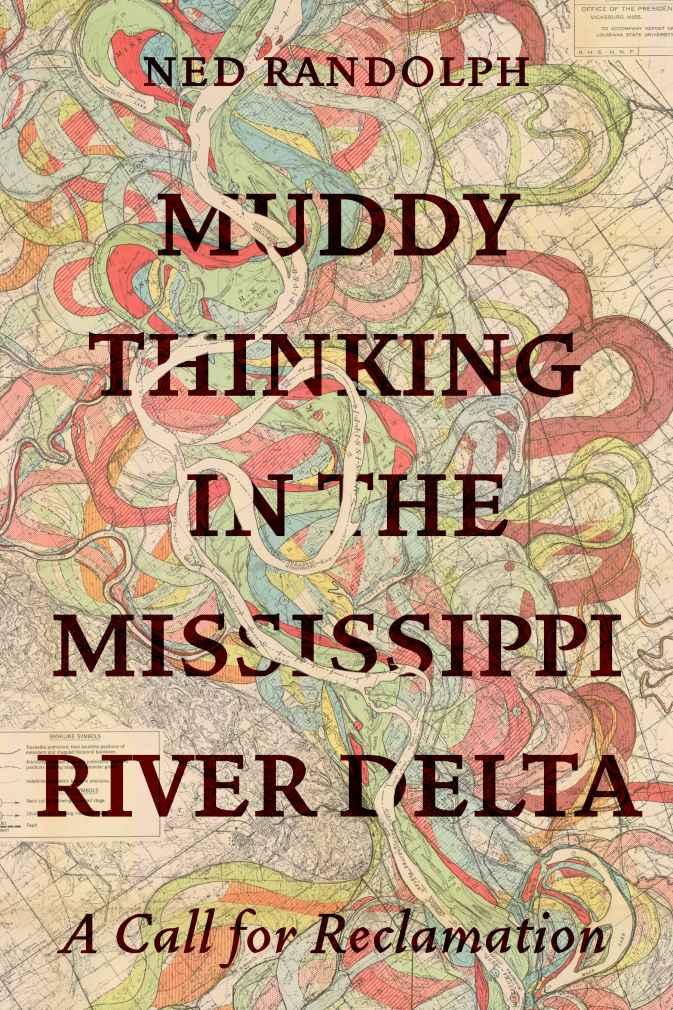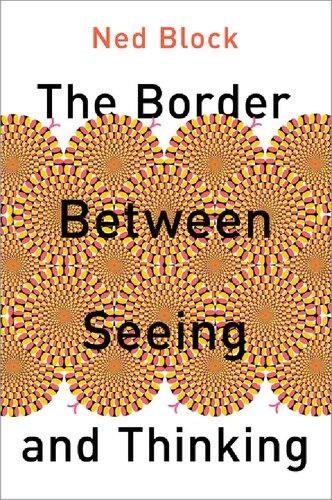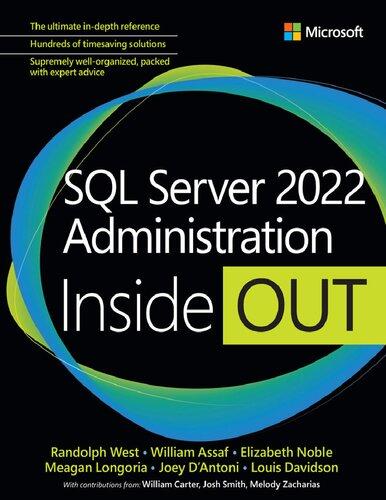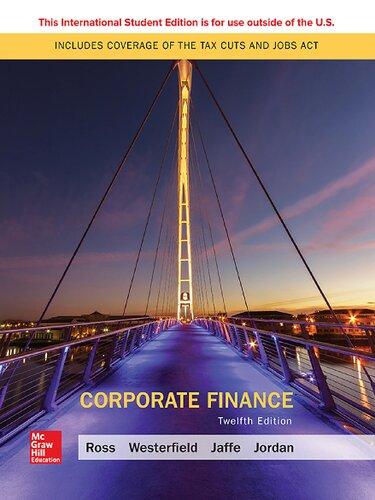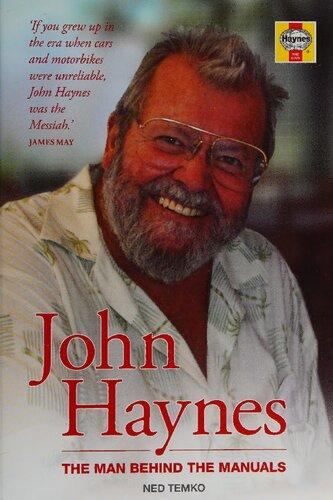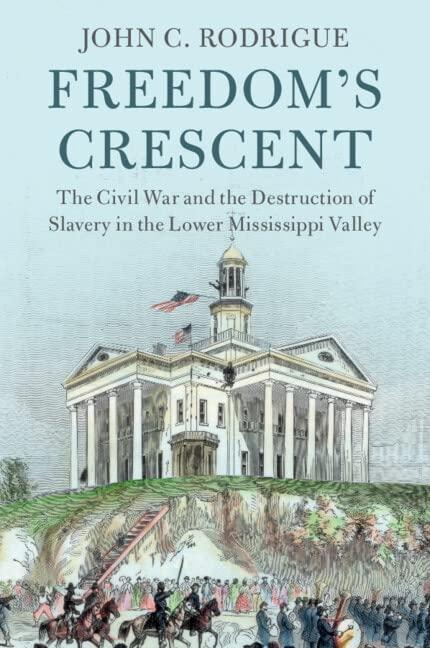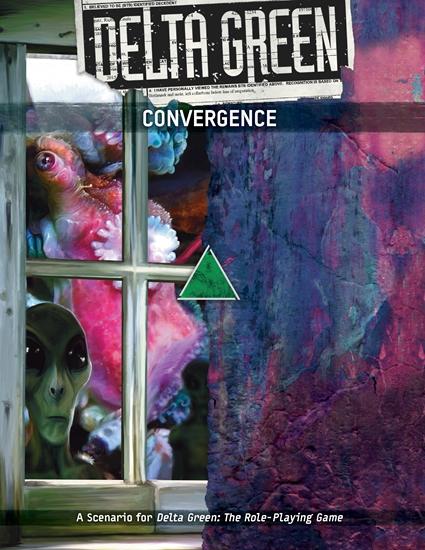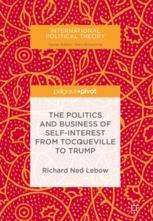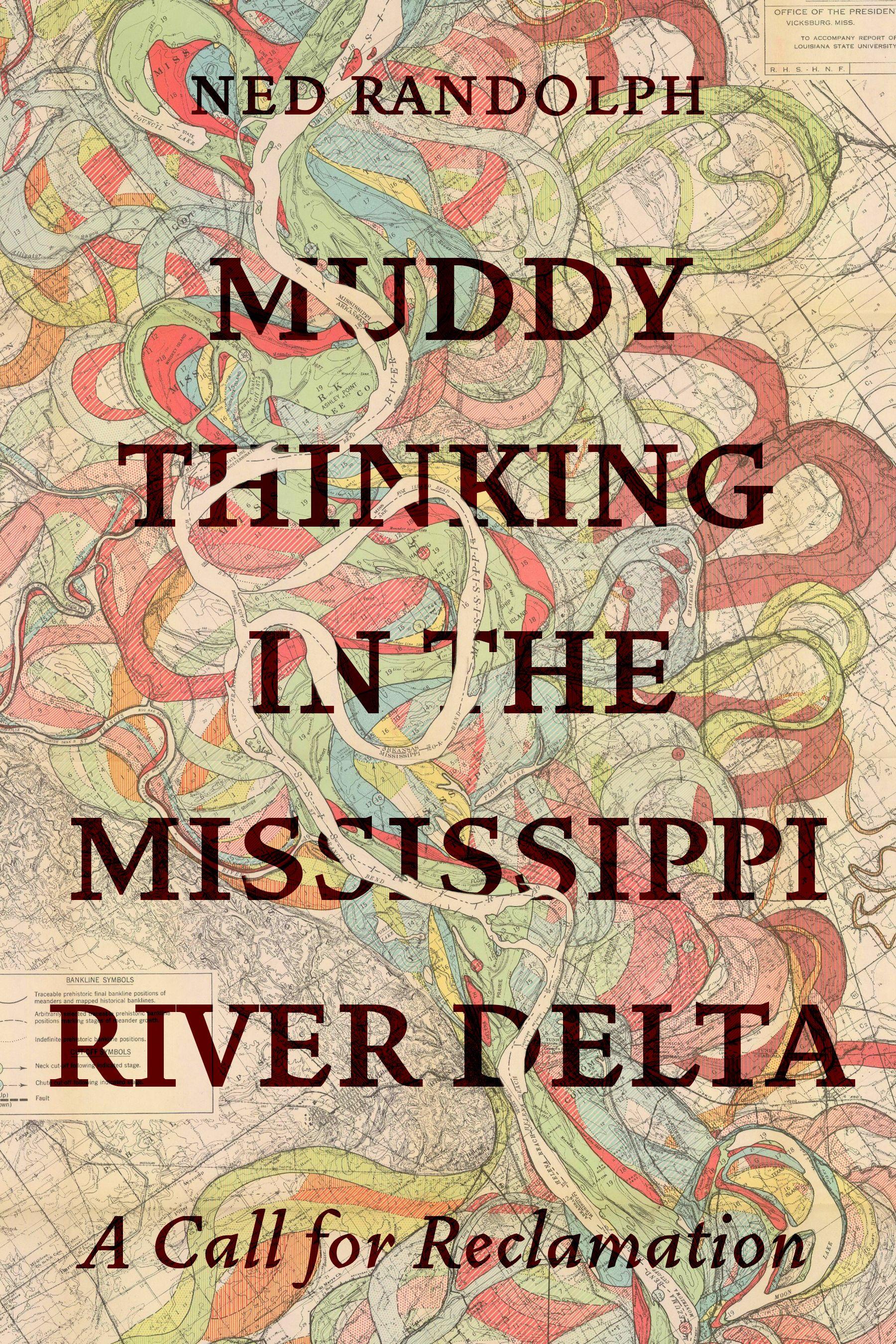A Turn to Mud
My early memories are murky and, like sediment, can be reshaped and sometimes permanently obscured. Particularly my memories of mud alluvial silt and clay delivered by water so omnipresent in a childhood of bayous and streams. I grew up in a town on the Red River, which gave my home parish (not county) the name Rapides. Before the Red River was irreparably tamed by the US Army Corps of Engineers’ $2 billion lock and dams project in the 1980s, it �owed with force.1 It was too dangerous for swimming. And sometimes, when the water level was low, you could see the remnant earthworks of “Bailey’s Dam,” constructed under Union Lt. Col. Joseph Bailey during the Red River Campaign. e dam lied the water for Union gunships to pass downstream. My dad, who seemed to know everything, said the dam was built to slow the pursuit of Confederates. In that campaign, Alexandria’s downtown riverfront was burned to the ground. But Tecumseh Sherman, known for his scorched march to Atlanta, reportedly sent orders to spare the Louisiana State Seminary of Learning and Military Academy (later renamed Louisiana State University [LSU]), where he had served as its �rst superintendent.2 He also spared several rural plantation homes as a sentimental gesture to the owners he had befriended during his post.
According to Alexandria’s town history, a wealthy Pennsylvania landowner named Alexander Fulton laid out the city in 1805 aer receiving a land grant from Spain two decades earlier. He named it aer his daughter.3 A different Fulton two years later would pilot the �rst steamboat up the Hudson River in New York, crossing a metaphorical Rubicon that would eventually open the Mississippi River basin to commerce and much of its southern
tributaries to plantation slavery and Indigenous displacement. But I want to clarify that this is not a story about the Mississippi and Red Rivers or at least not only about them. at story is famously retold with each new release of Mark Twain’s canon or travel article about New Orleans or even the scratchy recordings of Jellyroll Morton and Bessie Smith and the lamentations in Paul Robeson’s “Old Man River” about the unrequited nature of it all. John McPhee added his own imprint on the unintended consequences of controlling nature. e common narrative about the Mississippi River arguably comes from a bias of water. is project asks: What would happen if we start from a slightly different perspective? Would destabilizing and disorienting the landscape as it is popularly conceived bring forth questions that are not being asked in the deluge of water?
e book will certainly discuss water and land and how places and the people who live there are shaped by efforts to control nature. It will also explore how things may have been otherwise. e heart of this story is really mud. We will roll up our sleeves and get dirty, in a good way. is story proposes the framework “Muddy inking” to recast and denaturalize some of the effects that modern engineering and thinking have imposed on rivers and lands that have brought humanity to the edge of planetary extinction. But it is not meant to outline a dystopian future that forecloses discussions about possible action and alternatives. e specter of extinction is not the end of the story but rather a part of its “ongoing,” as Donna Haraway would say. Extinction is an extended plateau of events. It is a long and slow process that “unravels great tissues of ways of going on in the world” for many animals and people.4 As we journey along our current spectrum of history, extinction challenges us to respond. And how we respond is the question of our time. e provocation of this work aligns with what Haraway identi�es as an ethos (my word) of compost (her word). is work investigates the entangled histories of people, racial capitalism, and mud.
THE BIG MUDDY
In this book, organized around New Orleans and South Louisiana as a case study, I pose a deceptively simple question: How could this muddy place, whose land and people are uniquely vulnerable to sea level rise and environmental injustice, be one of the nation’s most promiscuous producers and consumers of fossil fuels? What cultural work makes this painful paradox feel not only possible, but inevitable? To answer this question, I bring together conversations in environmental studies and humanities to understand global warming as a technical and cultural phenomenon. Once described in a New York Times article as a “disaster laboratory,” Louisiana offers a compelling template for the contradictions of modernity and extractive capitalism.5 e state’s eroding shores, pollution, and petrocapitalism are emblematic of the forces causing global climate change. A three-century project to drain and reshape the Mississippi River since the colonial founding of New Orleans has been driven by interests to enable waterborne commerce, “reclaim” riverine marshes for plantation agriculture, and supply petrochemical plants with abundant feedstock of oil and gas. e harm of these practices is measured in “football �elds” of land loss as well as high morbidity rates for minority communities on the fence lines of petrochemical and industrial plants along the Mississippi River corridor. In numbingly familiar statistics to residents, the US Geologic Survey estimates the state loses 45 square miles of coastline a year the equivalent of a football �eld every one hundred minutes faster than anywhere in the world. Louisiana has lost more than 2,000 square miles of coastland since 1930. Names of drowned waterways and villages disappear from updated maps along with estuaries for �sheries, seafood, and international migratory �yways. “Coastal Louisiana experiences some of the highest subsidence rates worldwide, making the Mississippi River Delta one of the �rst areas to experience the effects of global sea-level rise.”6 Rising seas and the intensi�cation of more frequent hurricanes that roll up marshlands is accelerating this retreat and leaving New Orleans increasingly vulnerable behind levees while working-class hamlets, Indigenous communities, and other coastal villages sink.7 If there is a place that shouldn’t need convincing that the status quo is unsustainable, it is here in Louisiana. And yet
authorities are hellbent on doubling down on the same old thinking, to the detriment of the residents who suffer the brunt of these processes. e state supplies 90 percent of the nation’s offshore oil and gas infrastructure, which also feeds a secondary market of petrochemical plants up and down the Mississippi River corridor, known by residents as “Cancer Alley” or “Death Alley.” Erosive oil and gas canals channel seawater into brackish estuaries. Spills happen with regularity, many with little public awareness. ousands of miles of pipelines running through the increasingly disappearing coastal marshes face exposure to severe storms, and emptied oil wells subside underwater. Over a million permitted oil wells have been drilled in the state of Louisiana. ere are over 50,000 active oil and gas wells and another 22,000 to 28,000 that are idle and effectively abandoned. e state counts another 4,628 wells that are documented as “orphaned,” meaning no owner could be identi�ed or had a plan for plugging them. ese deteriorating wells leak oil, methane, and saltwater into the ground and air.8
Capping and cleaning up only the orphan wells would cost taxpayers an estimated $400 to $560 million.9 Plugging the approximately 28,000 nonproducing wells would cost $3.5 billion in closure costs alone, according to the Environmental Defense Fund.10 But abandoning infrastructure has long been a national pastime for the oil and gas industry. ere are more than 81,000 officially designated orphan wells across the country. A 2021 report published by the US Government Accountability Office found that oil and gas producers have been allowed to abandon 97 percent of offshore pipelines in the Gulf of Mexico without incurring any penalties.11 e effects of this corrosive infrastructure on vegetation seagrasses and other subtidal species along the coast are cumulative and largely unmeasured.12 Meanwhile, Louisiana has one of the most concentrated industrial clusters in the world policed by a perennially underfunded regulatory agency in the form of the Louisiana Department of Environmental Quality that relies on self-reporting by plants that literally mail reports to the office, which are simply scanned by employees.13 Unending river dredging and levee building is required to maintain the state’s �ve deepwater ports that reside in an uninterrupted chain along the Mississippi River’s banks from Baton Rouge to the Gulf of Mexico. Levees seal off coastal marshes from seasonal avulsions of mud and sediment; and dredging ensures the material �ows farther down the river toward the Gulf of Mexico. Invasive species from international cargo lay waste to land-
building vegetation and roots. And the weight of the Mississippi riverbed itself presses down as seas rise.
While Louisiana offers a cautionary tale of the destructive and dehumanizing effects of modern industry on land and people, it provides an opportunity to interrogate the deep, commonsense structures of what I call Extractive inking. Ironically, these same extractive forces that have led to coastal dissolution have also embedded themselves in solutions for coastal restoration.
By the time Hurricanes Katrina and Rita destroyed 200 square miles of Louisiana marshlands in 2005, the state had already lost 1.2 million acres of wetlands in seventy-�ve years. Aer Katrina, the state legislature approved the $50 billion “Comprehensive Master Plan for a Sustainable Coast,” a plan partially funded by oil and gas royalties on federal offshore leases and a legal settlement from the historic 2010 BP Deepwater Horizon blowout. When I think of the local and global disconnect between fossil fuel production and local sea level rise, the words of an emergency manager from coastal Lafourche Parish haunt me: “If we don’t have an economy, then what is there to protect?”14
I wonder if the solution is so irreconcilable. e presumption that oil is the only lifeblood of the economy ignores its falling employment numbers as well as generations of communities who have carved out their own covenant with the land. ere is a pernicious temptation to keep to the path of extraction, particularly for an area so degraded by an industry that has consumed not only the land but also hope for a different future. Let this then be an example of what awaits others as climate change continues to render this planet less hospitable. Let us not forget the promise the Earth once held, before it disappears as a reminder of what was possible. “ere is a �ne line between acknowledging the extent and seriousness of the troubles and succumbing to abstract futurism and its effects of sublime despair and its politics of sublime indifference, ” writes Haraway.15 In other words, we need to tell the difficult stories while also imagining new ways of living.
HOT TIMES
Just in the years since Katrina, hurricanes here have grown �ercer and more frequent as the Gulf of Mexico warms and Louisiana coastal marshlands disappear. Hurricanes now produce their own fuel as they approach saturated marshland in a phenomenon called the brown ocean effect. As a storm surge pushes warm Gulf water over inundated marshlands, it creates its own energy source. Rather than a buffering obstacle that protects inland communities, the marshland becomes an accelerant that increases wind speeds signi�cantly just before it reaches populated areas like New Orleans.16 In 2021, Hurricane Ida, for example, remained a hurricane sixteen hours aer landfall and le little time to evacuate. “Hurricanes draw their energy from warm ocean waters. But when they make landfall over a wet, marshy, or saturated spot, they can still power themselves with evaporating moisture.”17
As this book was being �nalized, we learned that July 2023 was the hottest month on Earth since record keeping began in the nineteenth century. And the ocean is getting warmer by the year. Since scientists have been keeping climate data, the Earth’s hottest years have all occurred since 2015. e year 2021 was the ocean ’ s hottest for the third year in a row, and the Earth’s average carbon dioxide output was the highest ever recorded.18 is occurred during a relentless global pandemic. A “Code Red” report on humanity was issued by the usually staid and cautious United Nations Intergovernmental Panel on Climate Change that pointed to the inevitability of increasing temperatures at an accelerated pace.19 If all emissions had halted in 2021, the planet would still be warming. “We are decades late” making necessary changes, Kristina Dahl of the Union of Concerned Scientists testi�ed in January 2022.20 Four months later, in May 2022, the National Oceanic and Atmospheric Administration (NOAA) reported that its monitoring station in Mauna Loa, Hawaii, had measured an average level of carbon dioxide in the air that had not been seen on this planet since the Pliocene era 4.5 million years ago, when sea levels were 16 to 82 feet higher and temperatures were seven degrees hotter. “South Florida, for example, was completely under water. ese are conditions that human civilization has never known.”21 Heattrapping carbon dioxide has risen 50 percent since the pre–Industrial Revolution year of 1750. By the time you read this, things will be worse.
e world puts about 10 billion metric tons of carbon in the air each year, but a dramatic spike has occurred in heat-trapping carbon emissions just since 1990. Greenhouse gas pollution caused by human activities trapped 49 percent more heat in the atmosphere in 2021 than in 1990, NOAA reports.22
Have we have passed the tipping point already? Carbon dioxide, for example, remains in the atmosphere for hundreds of years. But curbing other greenhouse pollutants like methane, which has a much shorter atmospheric presence, could show immediate bene�ts. Expanding natural sequestration sinks through reforestation would also remove legacy carbon. Yet we continue toward the point of no return. We need to start thinking about how to manage ourselves in the ruins socially, ethically, and emotionally. We must �gure out how to live and love in the shadow of doom and how to intervene effectively.
ere is a temptation to fall back to the spectacle of disaster with a cynical detachment, to deny ourselves the emotional connection to a reality too frightening to contemplate. e New York Times culture critic Amanda Hess lamented that the end of the world we are experiencing “does not resemble the ends of religious prophecies or disaster �lms.” ere are no dramatic �nales. “Instead, we persist in an oxymoronic state, inhabiting an end that has already begun but may never actually end.” Social media’s “apocalyptic drumbeat” of hopelessness ironically becomes a narcotic for it: “Just hit us with the comet already. ”23
Meanwhile, current proposals to reach net-zero carbon seem to require little structural change to our notions of productivity and growth. Instead, they hinge on burying the evidence. Witness the Democratic Louisiana governor, John Bel Edwards, admonishing efforts by the Biden administration to impose a moratorium on drilling in the Gulf of Mexico just weeks before the governor delivered a speech at the 2021 United Nations Climate Change Conference in Glasgow where he touted Louisiana’s initiatives to capture industrial carbon with new industrial projects.24 Between 2020 and 2023, there were �een announced low-carbon, carbon capture, and so-called blue hydrogen projects announced in Louisiana all of which would add to net emissions.
Yet, to his credit, the governor in 2020 appointed a climate task force alone among southern states to commit to reaching net zero by the year 2050 in line with the 2015 Paris Climate Agreement. But many of the
environmental advocates on the task force point out a discomforting truth about solutions proposed by industry task force representatives. e efficacy of so-called industrial carbon capture for removing CO2 is minimal despite the publicity by big oil companies. Fossil fuel producers claim they can recover carbon dioxide emissions from smokestacks and store it permanently underground (or use it to recover oil and make other products like petrochemicals), which would “recycle” carbon emissions. Despite the marketing by fossil fuel companies, carbon capture is a less efficient, more expensive, and more dangerous method for lowering greenhouse gas emissions than natural carbon sequestration projects like reforestation, which has a proven track record and is not predicated on industrial production.25
Governor Edwards followed his speech in Glasgow with the announcement of a massive carbon capture project by a Pennsylvania company to produce new sources of “blue ammonia,” which would create a net increase of carbon by a project that was touted to reduce emissions. Blue ammonia may be even worse for climate change than simply burning natural gas because of the leakage of methane.26 Other “environmentally conscious” industrial projects are popping up throughout the state, which would also have an impact on low-income, fence-line environmental justice communities in Cancer Alley. Louisiana is positioning itself to be the storage site for hazardous carbon waste for the nation, or what the activist Monique Harden calls a mecca for hazardous waste.27 Notwithstanding the glaring weaknesses of relying on aging infrastructure or building out new pipelines and storage facilities in environmentally and socially stressed areas industrial carbon capture and other net-zero fantasies offer little substantive solutions beyond assuaging the growing anxiety that we are out of real solutions. is book seeks to illuminate this intransigent madness, as well as offer some suggestions for �nding life in the ruins.
e critical humanities scholar Fredric Jameson famously wrote that it is easier to imagine the devastation of the Earth and nature than the end of late capitalism.28 is book suggests that the limitation is as much cultural as technical. What faces New Orleans at the toe of Louisiana’s boot, as well as all vulnerable frontiers, is characterized by what Amitav Ghosh calls “ a crisis of culture, and thus, of the imagination.”29 We are caught in a paradox. In Louisiana, state authorities tout the importance of Louisiana’s “working coast” of extractive industries to justify investments to restore a coastline that
can sustain them. Interventions for restoration are trapped on a path dependent on industrial consumption, which is emblematic of the very paradox and dialectic tension of modernity itself. Here is where this book intervenes. It argues that mud and Muddy inking might gum up the gears of modernity.
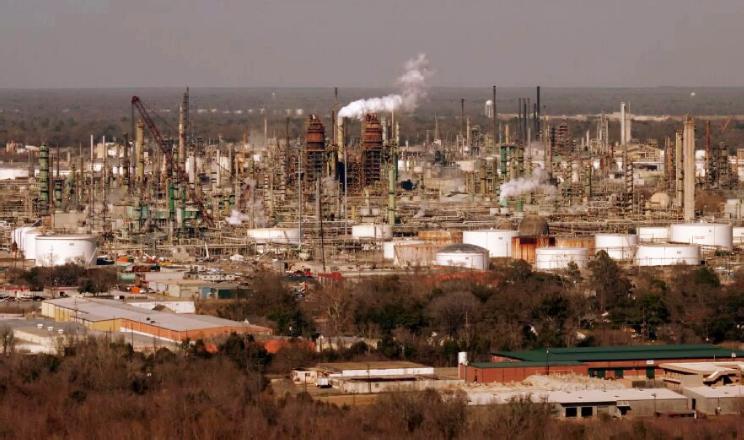
FIGURE 1. e ExxonMobil re�nery in Baton Rouge on the Mississippi River, built in 1909, is one of the largest oil and gas processing facilities in the world. Louisiana has sixteen such re�neries, none of them younger than �y years old. Eight of them, incidentally, were found to be the worst water-polluting in the country—and �ve of them were among the top ten. A 2023 report by the nonpro�t Environmental Integrity Project found that among the toxic polluters of nickel, selenium, nitrogen, ammonia, and “total dissolved liquids,” Louisiana’s aging re�neries ranked at the top ExxonMobil, for instance, ranked number 10 in the country for selenium discharges. ere are two hundred industrial, petrochemical, and heavily polluting plants along the river corridor between Baton Rouge and New Orleans Image available on Flickr through Creative Commons license by Jim Bowen.
THE RUSE OF MODERNITY
e cultural sociologist Chandra Mukerji describes modernity as a culture of survival and reinvention. As both a historical marker and a mode of living, modernity is fueled by dreams of utopia that fail to account for their dystopian effects. Powered by fossil fuels that radically alter their environment even before they burn, modernity destroys as it offers hopes for progress. It is built on the ashes of its own creation dialectically generative by its own destruction.30 Imre Szeman and Dominic Boyer note in their salient introduction to an anthology titled Energy Humanities that our very subjectivities are tied to abundant, cheap fossil fuels: “We are citizens and subjects of fossil fuels through and through, whether we know it or not.”31 at includes our imaginaries that such abundant energy makes possible. “In no discussion of freedom in the period since the Enlightenment was there ever any awareness of the geological agency that human beings were acquiring at the same time as and through processes closely linked to their acquisition of freedom,” writes Dipesh Chakrabarty.32 Modernity is responsible for the creation of enlightened, self-actualizing subjects while rupturing the planetary system that supports them. It has colonized our imagination with ever greater reliance on technologies that veer further from acknowledging our humble dependence on the nonhuman world, as well as our communal need for one another. “Nonhuman forces and systems had no place in this calculus of liberty: indeed being independent of Nature was considered one of the de�ning characteristics of freedom itself.”33 Modernity, writes Michel Foucault, “is the will to ‘heroize’ the present.” Such heroics are poeticized in anthems of achievement, Springsteen’s “mansions of glory in suicide machines,” an adolescent’s rebellion, or the cosmopolitan fetish of passport entry stamps. Modernity is authored in skyward jet streams. But there is another, even more nefarious tendency of this modernity in the way it categorizes and distills. Joseph Roach describes this as “ a taxonomy of segregationist behavior.” In his book Cities of the Dead, which investigates New Orleans and London, Roach argues that modernity particularly the European Enlightenment was based on separating spaces. Modern cemeteries and death were segregated into the unhygienic silence of the tomb. Cities of the dead were socially distinct from those who enjoyed the
status of the living.34 Likewise, civilization was strictly separated from wilderness, which, in the words of omas Hughes, was framed as a “second Eden, ready to be manifested through man ’ s unique aspiration and inspiration.”35 is new modern man transcended the chains of natural cycles to write a history of progress, triumph, and freedom without acknowledging its cost. “Only those people who had thrown off the shackles of their environment were thought to be endowed with historical agency; they alone were believed to merit the attention of historians other peoples might have had a past, but they were thought to lack history, which realizes itself through human agency, ” writes Ghosh.36
Modern humans rationalized their curation of wilderness to “complete what God had started.” New Orleans started as a product of this imaginary. It was made possible by a philosophy of taming a wild landscape through rational governance of separating water from land. To be modern is to know the world through Extractive inking. As a theoretical framework, I argue, Extractive inking has led to the plundering of vital ecosystems and then mitigating the harms of such practices through newly imagined methods of extraction. It attempts to invent and consume its way out of its own crisis. As our polar ice caps melt, multinational oil companies leapfrog one another to drill for the reserves below. Here in Louisiana, the modern project is traced through a political ecology of clear-cut cypress timber and denuded coastal marshes in pursuit of the very energy to fuel this plunder. Extractive inking sought to erase the mud by creating distinctly separate realms of land and water.
MUDDY THINKING
is book is an attempt to disentangle our imaginaries from the modern impulses that are embedded into the logics of the fossil fuel industry. It provides a historical and cultural analysis of Extractive inking through case studies that reveal how this logic has stripped our landscapes and harmed its people. To do this, it uses a material analytic that shis our commonsense understanding of progress. It starts with mud.
Did you feel it? e drab, unheralded, unwanted, unsung layer of unstable detritus that constitutes the very material foundation of New Orleans and South Louisiana. Always pushing against the modern project of New Orleans and Louisiana is the problem of mud. Mud.
While the river is memorialized in the national and New Orleans imaginary, mud fails to mark any identity. Extractive inking signi�es this material through attempts to erase or control it. It is viscerally known and discarded. Muddy sediment was listed in old boring logs as “ swamp muck.” It teamed with life and smelled of rotten eggs. Today it is classi�ed as clay, muck, coarse sediment, and peat. It seems to hide within the discourse of the river as an underside to a binary or disruptive agent. Mud has not only been a discarded element, but it has indexed loathsome bodies and spaces. e marshy terrain of New Orleans, for example, was a contested site of discourses from the nineteenth-century Sanitary Movement and its drainage infrastructure.
De�ned by its mixture with water, mud oen sits outside of scienti�c and scholarly discourses of sediment materials. Mud is instead what soil, clay, and sediment are not. It is leover detritus. It is resistant to easy categorization and standardization. It is also quite unpleasant. A more complex understanding and consideration of mud may allow messy edges to persist and even spread where possible. rough mud, this book critiques relations of social power. It unpacks the cultural and racial history of New Orleans and the Lower Mississippi Delta region. rough mud, it tells a story of both the natural environment and the social conditions and histories entangled within it.
Signi�ed by the pithy, timeless counsel to let nature take its course, the framework of Muddy inking invites us to settle in and get comfortable in the muck. Muddy inking, metaphorically speaking, disrupts progress. It opens possibilities with inaction, with partial visibility, with acceptance of the unknown, unactualized, and unextracted. It is an antidote to consumption. It is to accept value in areas unde�ned and economies of exchange rather than growth. It is to drop the nature/human dichotomy and embrace what Raj Patel and Jason Moore call an ecology of interconnectivity and to align with Haraway’s call for “compositionist” practices that can build new collectives.37
Muddy inking stubbornly resists the prevailing idea that the climate crisis will be solved with exciting new technologies, entrepreneurism, or green capitalism. It instead analyzes how such technocratic discourses naturalize and rationalize limitless growth. For instance, how did ineffectual (yet �nancially lucrative) schemes to achieve net zero become so dominant in our thinking while doing so little to conserve our dwindling resources? How do such programs instead function as commonsense strategies to rationalize uninterrupted consumption? Muddy inking interrogates the functional logic that we can consume our way out of the crisis through strategies predicated on continuing, if not increasing, consumption. It skeptically investigates “greenwashing” campaigns that rehabilitate the reputations of the very companies and practices that fomented this crisis.
Corporate pledges to reach net zero by companies like Amazon, AT&T, and Walmart are undercut by revelations of campaign contributions to climate deniers.38 Muddy inking argues for a full audit of energy consumption to unveil the true costs of energy even green energy that promises sustainability with little behavioral change of consumers. Muddy inking troubles the liberal ideal. It also provides an accessible framework for taking on discussions about the Anthropocene as a planet-altering epoch initiated by mankind.
TROUBLE IN THE ANTHROPOCENE
As both a geologic category and a recognition of the social moment for which it is named, the Anthropocene is identi�ed by the Great Acceleration of consumption aer World War II. Its legacy is measured in the scars and isotopes of the geologic record of the planet. e term was coined in the early 1980s by the University of Michigan ecologist Eugene Stoermer. It picked up steam in 2000 when the Dutch Nobel Prize–winning atmospheric chemist Paul Crutzen joined Stoermer to propose that human activities were so devastating, impactful, and measurable as to merit a new geologic term for a new epoch following the Holocene.39
e twelve thousand years since the end of the last Pleistocene Ice Age have been credited with stable planetary weather that allowed the �ourishing of large-scale agriculture and civilizations. But the new designation, the Anthropocene, has called for more debate about when and how emissions began accelerating. Some look back to the late seventeenth-century steam engine; others, to earlier logics of industrialization and bodily oppression perfected by plantation slavery. e designation Anthropocene as a geologic category may be legible to scientists, but critical scholars argue that it may further naturalize human activities without interrogating the uneven effects of global warming on marginalized populations. Some have countered with proposals for a Capitalocene or Plantationocene to acknowledge the role of globalized colonization and capitalism. I’ll return to this debate in the conclusion, but for now, I’ll use the Anthropocene as a placeholder because it is legible across disciplines, from scienti�c discourses to the humanities, to discuss the problem at scale.
Climate change and planetary extinction are simply so large, so complex and dynamic to be what Timothy Morton calls a “hyperobject” meaning that it takes all faculties, cooperation, and vantage points to even frame and understand its complexity.40 It appears differently to different perspectives and locations. It acts differently to different disciplines. It is subtle, dramatic, historic, imminent, large, and contradictory. e planet is warming, yet winter storms are more dramatic and abundant. Drought is chronic in large swaths of the globe as �ooding simultaneously threatens. e Mississippi River in 2019 reached �ood levels from record rainfall in the Midwest,
prompting the US Army Corps of Engineers to open the Bonnet Carré Spillway in Louisiana for a record seventy-six days. ree years later, drought in the Midwest lowered water levels below partially buried shipwrecks and prompted the government in lower Plaquemines Parish, which relies on treated water from the river, to deliver bottled water for weeks to residents. e inability to reduce these contradictions to sound bites hides its reality. Reductionist thought is its weapon. As an unofficial moniker, the Anthropocene has currency among many different practitioners. It is also open to challenges as we discuss interventions and the stakes of inaction. e raw spectacle of terror that global warming incites can also lead to inaction. So balancing between poles of denial and self-defeating catastrophe is important but not easy. In fact, it is probably the more difficult approach.
STAYING WITH THE TROUBLE
I borrow the tagline, “Staying with the Trouble,” from Donna Haraway to underscore the intellectual challenge of addressing and disrupting the power of Extractive inking. One of my biggest concerns in researching this project was a lack of legible solutions for transcending the paradigm. e dilemma continually eluded my conventional grasp, which makes sense. e exceptional challenge of climate change re�exively raises the question of how we can persevere without some technical breakthrough. ere are too many of us and too few resources. How can modern people so accustomed to comfort and individuality puzzle a way out of this dilemma? What I continually, frustratingly, came up against is the limitation of the paradigm itself. ere is no modern solution, at least not from this conventional vantage point. We must change much more than our automobiles and gas stovetops. If we expect battery-powered motors or wind and solar energy to save us, we remain on the same dreamlike trajectory. Our assumptions about unlimited energy must change. We must instead labor to �nd understanding in what Anna Tsing calls “life in the ruins.”41 Even as the ground beneath us trembles and shis, we remain on the ground. Staying with the trouble requires learning to live in the present, no matter what it happens to resemble: not a “vanishing pivot between awful or Edenic pasts and apocalyptic or salvi�c futures.” We must face our own continuing. Life in the ruins will also be shared with “mortal critters entwined in myriad un�nished con�gurations of places, times, matters, meanings.”42 is requires telling some pretty tough stories about the present.43 We must resist looking away and dissociating ourselves from what is happening and will continue to happen. We cannot disconnect from an uncomfortable present and uncertain future. We cannot take comfort in the fact that in the future we’ll be dead anyway, as former President Trump mused.44 Rachel Carson sixty years ago wrote that we have an obligation to endure, which should also be understood as an obligation we have to not only ourselves, but others.45 If we can’t invent our way out of the paradox of annihilation and survival, then perhaps we must let this modernist quandary die. We may look to other epistemologies and practices not predicated on extraction such as the insights of Indigenous peoples exercising care-based stewardship with a deep
connection to place. e anthropologist Kristina Lyons studied Amazonian farmers who were living and working on land that was written off as fallow by the Colombian government. She wondered how such communities could sustain themselves and thrive in the midst of the threat of annihilation and war. What she found was that by not participating in the “high-modernist extractive policy of narco-eradication” or mining, they had instead carved out a transformative space within the dense entanglements of decomposing leaves and rootlets and the insects, small animals, and birds cloaked by selva canopy. “It was a tenacious vitality of life . . . pulsating away. ”46 Modes of eating, seeing, cultivating, and decomposing allowed these ecologies to endure. “What I learned,” Lyons writes, “ was that rather than rely on productivity one of the central elements of modern capitalist growth the regenerative potential of these ecologies relies on organic decay, impermanence, decomposition, and even a robust fragility that complicates modernist bifurcations of living and dying.”47 In other words, life persists in decay. Life beyond modernity is possible.
On this trajectory of modern “failure,” we will need a methodology that reframes what we think we know about the world. “Farms are never only farms when they are also always regional watersheds, foothills, forests, biological corridors, and �oodplains.”48 We will need to interrogate how knowledge production about the environment scienti�c research or even environmental journalism constructs a particular object for humancentered utility. e environment implies fragility and limitations. How has our rhetorical frame affected how we experience and represent what we consider the nonhuman world? How has this logic brought mud itself into being?
In Louisiana, there are six major categories of land that are de�ned by how waterlogged they are. “In many cases the distinction is arbitrary as many areas represent transitions between the two.”49 Cypress swamps and marshes register the transition from freshwater habitats in the upper delta plain to brackish and saline habitats in the lower delta plain.50 Areas that are less inundated become forested. Closer to the sea, much of the marsh is unwalkable �ottant.51 In essence, the taxonomy of southern Louisiana is a classi�cation of mud, which is somewhere between land and water a liminal state that resists stable classi�cation. It is context-dependent.52 “Biologists and ecologists have found that wetlands are difficult to de�ne they have
identi�ed thirteen types in all, and their boundaries are hard to de�ne. ey may be permanently inundated, seasonally inundated, intermittently inundated, or seasonally waterlogged.”53 Wetlands are so named because water saturation is the dominant factor determining the nature of soil development and the types of plant and animal communities living there, according to the US Department of Interior Fish and Wildlife Service.54 In other words, wetlands are classi�ed not only by what they are but also by what they do which opens interesting questions of ontology. How we think about mud and water has a lot to do with how they are used and by whom they are framed.
Historically and even today, when political and business interests have discussed the Mississippi River, they have conjured up a body of water moving over land, which is not really what an alluvial river is. Alluvial rivers are silty. Riverbanks and riverbeds erode and move. Alluvial rivers bend, loop, and crevasse in unexpected directions based on paths of least resistance. When a riverbank �oods, as the Mississippi River’s oen did, the river’s muddy �ow spilled into other geographic, social, and political arenas. Modern engineering and political impulses wanted to corral and stabilize the river. Levees were raised higher, and the river’s con�nes were narrowed. ese nineteenth- and twentieth-century efforts to discipline the river created new problems.
As engineers leveed, narrowed, and shortened the river, they turned it into a more efficient waterway: a self-scouring engine that became cataclysmic when levees failed, which they inevitably would do. Interventions in the Mississippi River have led to the largest “natural” disasters in American history, recounted in American literature, oral histories, news reports, geologic surveys, spirituals, blues recordings, ballads, journals, jail logs, plays, and civil rights complaints. is legacy also disrupted the ecological processes of the Louisiana delta formation that had taken place over several millennia. By the 1930s, researchers understood that the Mississippi’s River’s historical, geomorphic meandering had deposited thousands of layers of organic soil that nurtured a hardwood bottomland forest and built an alluvial delta. But as the decades in the twentieth century progressed, they began to suspect that the Herculean effort by the Army Corps of Engineers to dredge and levee the river to protect communities from �ooding was choking off the Louisiana marshlands from their progenitor. As sediment and mud were
